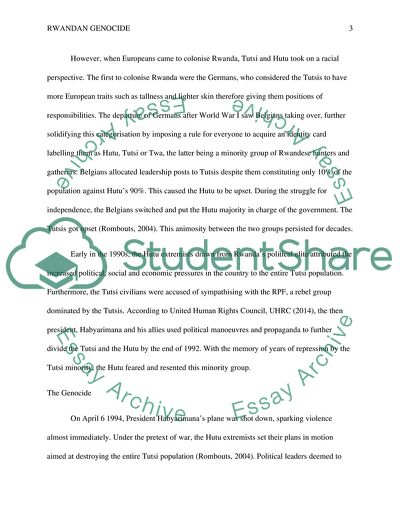Cite this document
(Rwandan Genocide and Reparations Essay Example | Topics and Well Written Essays - 1500 words, n.d.)
Rwandan Genocide and Reparations Essay Example | Topics and Well Written Essays - 1500 words. https://studentshare.org/philosophy/1811605-rwandan-genocide-and-reparations
Rwandan Genocide and Reparations Essay Example | Topics and Well Written Essays - 1500 words. https://studentshare.org/philosophy/1811605-rwandan-genocide-and-reparations
(Rwandan Genocide and Reparations Essay Example | Topics and Well Written Essays - 1500 Words)
Rwandan Genocide and Reparations Essay Example | Topics and Well Written Essays - 1500 Words. https://studentshare.org/philosophy/1811605-rwandan-genocide-and-reparations.
Rwandan Genocide and Reparations Essay Example | Topics and Well Written Essays - 1500 Words. https://studentshare.org/philosophy/1811605-rwandan-genocide-and-reparations.
“Rwandan Genocide and Reparations Essay Example | Topics and Well Written Essays - 1500 Words”. https://studentshare.org/philosophy/1811605-rwandan-genocide-and-reparations.


